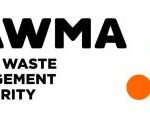
The Minister of Works and Housing, Mr. Babatunde Fashola, last May, warned Lagos residents against using Lagos under bridges as trading centres and dwelling places, noting that those doing so are endangering their lives. The minister even issued a 30-day ultimatum to all the illegal occupants to relocate. Investigations by PUNCH HealthWise, however, revealed that not only has trading and other commercial ventures continued at the Obalende underbridge, but indiscriminate open defecation and improper plastic waste disposal by street urchins and other illegal occupants in the area could now expose residents to diseases and deaths. AMARACHI OKEH reports
The Obalende underbridge is one of the most popular and thriving under bridges in the Lagos metropolis.
It is also a major motor park for interstate movement as well as for several illegal and illicit businesses. Notwithstanding several efforts in years past to give the Obalende under bridge a facelift, the place is now an eyesore due to poor hygiene and sanitation practice.
The motor park at the Obalende underbridge has also long been popular due to the presence of different kinds of people, particularly, street urchins, thieves, thugs, beggars, drug dealers, traders, etc.
The activities of the illegal occupants at the Obalende underbridge has, however, thrown up fundamental, environmental hygiene challenge to residents of the area.
Arriving at the park from the mainland, a first-time visitor to the Obalende underbridge is guaranteed to be assaulted and shocked by the various brazen sights causing public disgust and discomfort.
When the first-time visitor moves closer to the underbridge, the sight that will greet him/her is the pillars supporting the flyover. They are adorned with bold and colourful art statements that are supposed to add beauty to the flyover, but now look pale, filthy, and dirty. They are now barely noticeable.
Underneath the flyover is also an open canal conveying smelly, thick black water laced with floating colourful Styro food packs as well as plastics of all sorts.
As the water slowly flows towards the lagoon to empty itself, the sight of men carelessly pulling their wears to dump their human excrete into the canal in full view of the public, and in the process leaving dried traces of excretion on the walls of the canal assaults the eyes of all passersby,
Yet, there are also food vendors selling food and, discarding their food waste into the carnal.
Under the Obalende bridge also are several shipping containers that have become both home and business outlets. On the other opposite side of the canal is a thriving mechanic outlet.
This described sight albeit repulsive has become a familiar view that the majority plying this route have adjusted to.
Open defecation persists
A visit to the popular underbridge by our correspondent last week revealed that open defecation has not only returned to the area but is now a major public health issue that the government has to address.
PUNCH Healthwise investigation also revealed that there are clean public conveniences in the area, especially within the BRT bus park, but it seems many people who are now used to illegal open defecation have no interest in them.
Our correspondent findings revealed further that there is a public toilet nearby with running water that can serve the people who want to urinate, bathe or defecate and it charges N50 and N100 respectively. Yet, only a few passersby patronise the public toilet. Many people prefer defecating into the canal.
It could be recalled that the Lagos State Government had in November declared that it had zero tolerance for open defecation adding that it aims to eradicate the menace by 2025.
However, with the prevalence and continuation of open defecation under the Obalend bridge and elsewhere, this goal seems unattainable.
A World Health Organisation and United Nations Children’s Fund Joint Monitoring Programme 2021 report said 494 million people practice open defecation, adding that 92 per cent of these people lived in rural areas and nearly half of them lived in sub-Saharan Africa.
The report noted that the practice is a common sight in many major parks, not just Obalende in Lagos state, which is considered a mega city in West Africa.
WHO added that open defecation perpetuates a vicious cycle of disease and poverty, stressing that where open defecation is most widespread, children aged under five years have the highest number of deaths, as well as the highest levels of malnutrition and poverty.
No end in sight to careless plastic waste disposal
Our correspondent during the visit to Obalende also noted the presence of the Lagos State Waste Management Authority officials working and evacuating wastes that were dumped at the foot of the bridge. However, the clustered plastic wastes in the canal remained unattended.
It could be recalled that different government agencies and even non-governmental organisations in times past have taken their advocacy on proper sanitation to the Obalende underbridge to educate people around the area on how to properly dispose of wastes, especially plastics as well as the need to end public defecation.
For instance, in 2021, the Lagos State Environmental Protection Agency carried out campaigns under the bridge to help educate the people on how to imbibe the culture of rightful disposal of waste but it seems the effort has failed to end the culture of poor sanitation and hygiene under the Obalende flyover as the trend of dumping plastic wastes into the open canal persists.
FG’s weightless ultimatum
In May, the Minister for Works and Housing and a former governor of Lagos State, Babatunde Fashola issued an ultimatum to all illegal occupants of Eko Bridge, Carter, and Obalende flyovers in the state to relocate.
He warned the occupants against turning the underbridge into motor parks, residences, and workshops.
But despite his warning that expired on June 9, 2022, the Obalende underbridge is still as busy as usual with no illegal occupant evacuated from the area.
The underbridge is an eyesore. The stagnant canal is emitting an offensive odour that must be a result of the combined smell of the dirty darkened canal water, human waste as well as food waste constantly dumped into it.
Also, food sellers under the bridge are not repulsed by the sight or the smell, they are no doubt used to it but some passengers are not.
Ms. Franca Olabisi, a business consultant, plies the Obalende Underbridge route to and from work daily. She couldn’t hide her disgust when asked how she felt about the sight of the underbridge.














